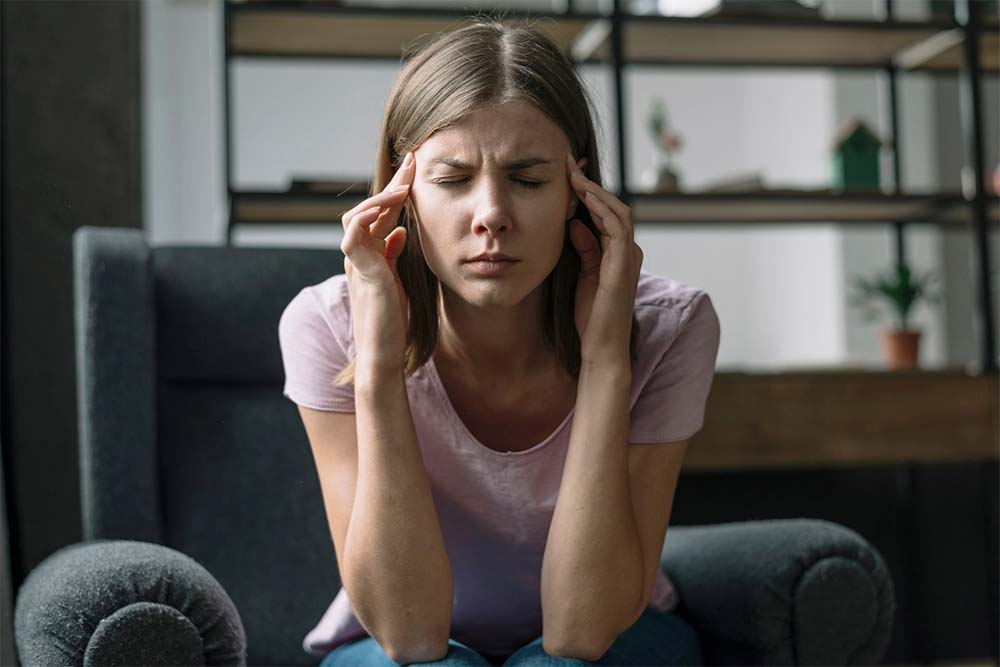Cluster headaches, also called “suicide headaches,” are one headache type that few people have heard of. Cluster headaches are severe tension headaches typically occurring for weeks or months. They commonly occur in clusters, or groups, of 3 to 6 headaches per month, during which time they appear to be worsening. Not only can cluster headaches cause tremendous pain, but they can also affect your quality of life. Cluster headaches can last 15 minutes to several hours and cause the person to lose consciousness.
Cluster headaches are the second-most painful type of headache and occur at least 15 times per day in about 30% of sufferers. The headaches can last 30 minutes to several hours and may result in severe, throbbing pain, typically on one side of the head. The symptoms can also include eyelid drooping, nausea, vomiting, and sensitivity to light. While cluster headaches can occur in genetically predisposed individuals, they usually occur in people without known genetic risk factors. And their episodic nature can cause distress and disability.
Cluster headaches are a rare type of migraine.
Cluster headaches are a rare type of migraine usually classified into “classic” and “prodrome.” The difference isn’t always clear, though. Both classic and prodrome cluster headaches involve the same symptoms: excruciating pain that is throbbing or pulsating, usually behind the eyes or at the top of the head.
Cluster headaches are rare, and about 50 to 75 percent of people who have them have a family history. They are the most severe type of migraine and are usually accompanied by a throbbing pain behind the eyes. These headaches can last for hours and may be accompanied by nausea, vomiting, sensitivity to light and sound, and throat pain. Since they occur so suddenly, many people mistake them for a stroke.
Extreme pain with no warning signal
Cluster headaches tend to be excruciatingly painful, with victims reporting pain that feels like someone is hammering their skull with a massive stone. The attacks go on for hours, and the pain is so severe that victims may be forced to drop to the floor and curl up in a ball.
The headaches begin suddenly, without warning, and can last for as long as 3 days. The exact cause of cluster headaches is unknown. They are believed to be one of the most painful diseases known to man, with many patients experiencing excruciating pain for weeks at a time.
Who Gets Cluster Headaches?
Cluster headaches are severe headaches that last from a few minutes to several hours. They affect men more than women and are most common in people in their 30s and 40s. The headaches occur on both sides of your head, and the pain can radiate to your eyes, jaw, and face. These painful headaches can last for weeks at a time—even months. And the pain can be so intense that the pain can cause you to vomit.
While it’s not yet known exactly what causes cluster headaches, they seem more common in men, are often brought on by stress, and may be linked to certain medications. Because cluster headaches can be so painful, sufferers often seek relief from painkillers, including opioids. But while some painkillers can help reduce the pain of cluster headaches, others may actually increase the pain. You can check out cluster headache clinical trials at Power if you’re looking for additional treatment options for cluster headaches.
Typical Cluster Cycles
Timing of an Attack
Cluster headache attacks occur at 30-minute intervals. Cluster headaches can last from 15 minutes to several hours but usually only last for about 30 minutes. The attacks can start in the middle of the night or in the middle of an intense conversation. Some people do not even know they have a cluster headache until after the attack is over. During a cluster headache attack, the sufferer will suffer from throbbing pain in the head, as well as nasal congestion, eye-watering, and light sensitivity. The attacks usually occur several times each month. Cluster headaches are chronic, meaning they last for months or years and may even come and go throughout a lifetime.
Number of Attacks Per Day
Cluster headaches occur during cycles. A typical cluster headache cycle lasts 15-30 days. During a cluster headache cycle, a person may have 2 to 6 attacks per day. During a cluster headache attack, a person’s blood pressure may rise. Cluster headaches often end with a headache-free period.
How is a cluster headache treated?
A cluster headache pain attacks are not frequent—about once a month—but they are extremely painful. Cluster headaches can lead to serious complications, including strokes if left untreated. Fortunately, the treatment of cluster headaches can be extremely effective. The treatment plan commonly includes using medications, such as carbamazepine (Epival), triptans (Amerge, Xeralto, Maxalt), and sumatriptan (Imitrex).

